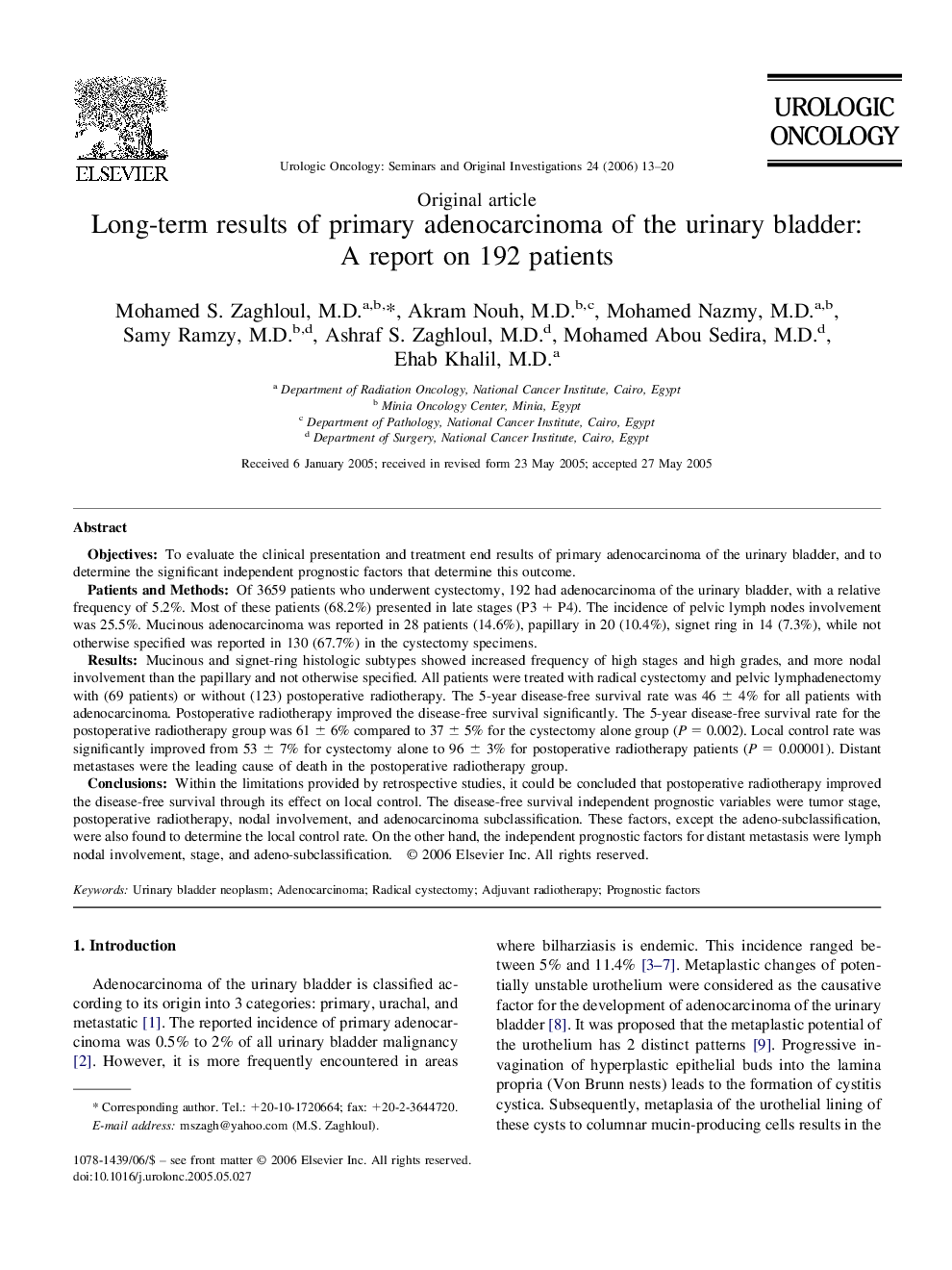| Article ID | Journal | Published Year | Pages | File Type |
|---|---|---|---|---|
| 4001544 | Urologic Oncology: Seminars and Original Investigations | 2006 | 8 Pages |
ObjectivesTo evaluate the clinical presentation and treatment end results of primary adenocarcinoma of the urinary bladder, and to determine the significant independent prognostic factors that determine this outcome.Patients and MethodsOf 3659 patients who underwent cystectomy, 192 had adenocarcinoma of the urinary bladder, with a relative frequency of 5.2%. Most of these patients (68.2%) presented in late stages (P3 + P4). The incidence of pelvic lymph nodes involvement was 25.5%. Mucinous adenocarcinoma was reported in 28 patients (14.6%), papillary in 20 (10.4%), signet ring in 14 (7.3%), while not otherwise specified was reported in 130 (67.7%) in the cystectomy specimens.ResultsMucinous and signet-ring histologic subtypes showed increased frequency of high stages and high grades, and more nodal involvement than the papillary and not otherwise specified. All patients were treated with radical cystectomy and pelvic lymphadenectomy with (69 patients) or without (123) postoperative radiotherapy. The 5-year disease-free survival rate was 46 ± 4% for all patients with adenocarcinoma. Postoperative radiotherapy improved the disease-free survival significantly. The 5-year disease-free survival rate for the postoperative radiotherapy group was 61 ± 6% compared to 37 ± 5% for the cystectomy alone group (P = 0.002). Local control rate was significantly improved from 53 ± 7% for cystectomy alone to 96 ± 3% for postoperative radiotherapy patients (P = 0.00001). Distant metastases were the leading cause of death in the postoperative radiotherapy group.ConclusionsWithin the limitations provided by retrospective studies, it could be concluded that postoperative radiotherapy improved the disease-free survival through its effect on local control. The disease-free survival independent prognostic variables were tumor stage, postoperative radiotherapy, nodal involvement, and adenocarcinoma subclassification. These factors, except the adeno-subclassification, were also found to determine the local control rate. On the other hand, the independent prognostic factors for distant metastasis were lymph nodal involvement, stage, and adeno-subclassification.
